State of Mind is a new indie adventure game developed and published by Daedalic Entertainment, the developers behind Silence and publisher of Shadow Tactics: Blade of the Shogun. The game is set in Berlin, 2048, and covers topics like transhumanism (the artificial evolution of humans using technology), surveillance and totalitarianism.

Upon starting the game, I was pulled into a beautiful, bright nighttime cityscape, reminiscent of other familiar sci-fi cities, such as those in films like Blade Runner. The low-poly models, despite their lack of curves, make for incredibly immersive, visually stunning scenes, characters, and objects that, in my opinion, work better for this game over “realistic” graphics. The game plays in a very close “over the shoulder” third-person perspective. In the beginning, I struggled with having so much of the screen obscured by the character, and the lack of the inclusion of a FOV slider gave me few solutions to this issue. Thankfully, within less than half an hour, I’d become used to the perspective and it no longer phased me.
As I’ve already mentioned, State of Mind is set in Berlin, 2048, where technology is king. Self-driving cabs and flying buses are the norm, “bots” have claimed many public service jobs, and most of the population is artificially augmented (not to the contentment of all citizens, as players soon discover).
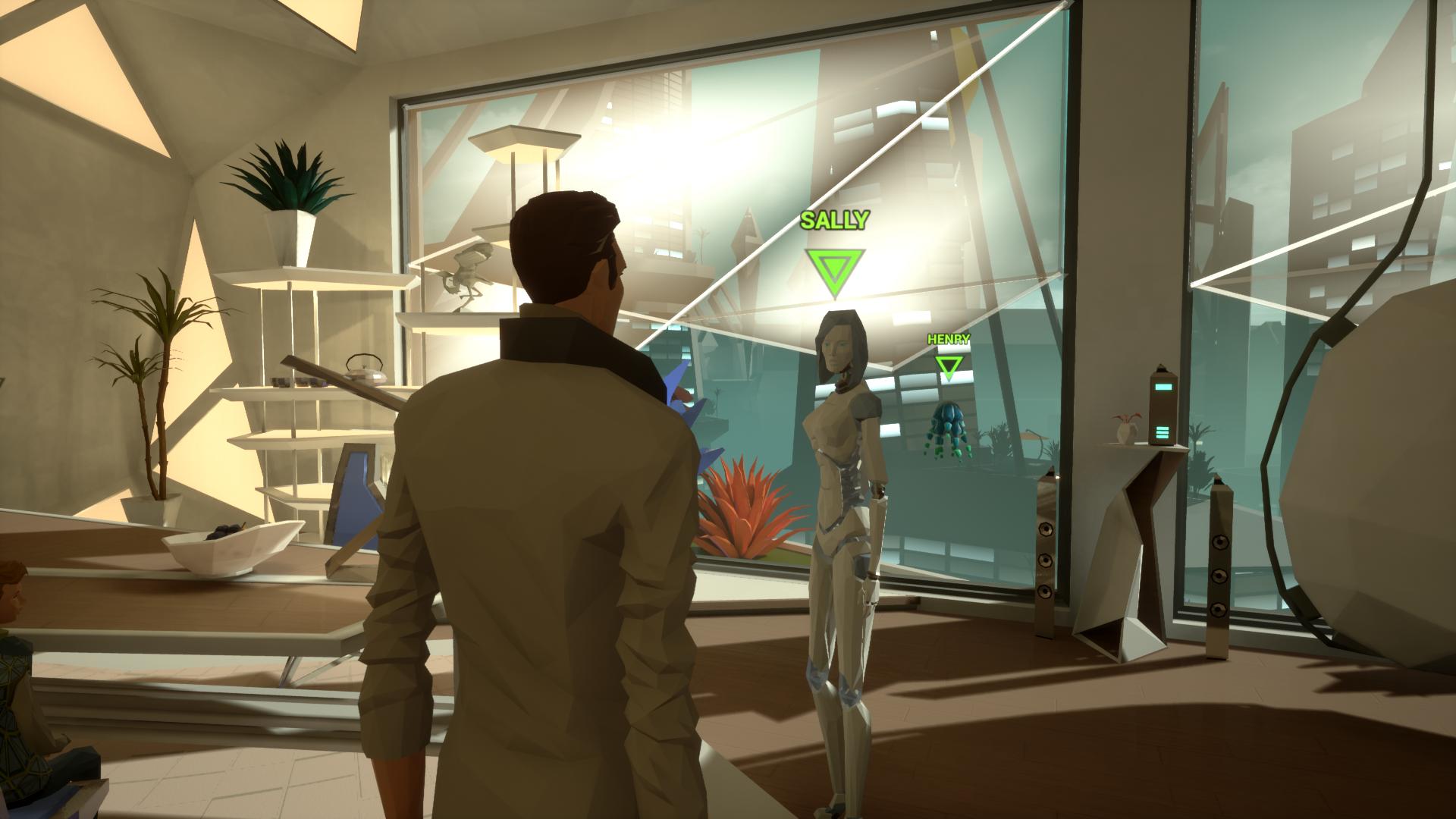
In State of Mind, you play as Richard, a pessimistic journalist with the determined belief that technology will be the death of mankind. But you also play as Adam, an optimistic father who just wants the best for his family. That’s right, multiple protagonists. Unlike most games, I’m used to, where I can design my character and their story from the ground up, in State of Mind, the characters you play already have all that lined up for them. They already have people they like and dislike, they have jobs and they have their own agendas that you as the player must accommodate. I thought I would have trouble switching between characters and not knowing who I was (I’m not the best with faces), but Daedalic made it easy to identify who was who with clear and simple changes in the environment. Pessimistic Richard wears dark clothing and lives in a dark apartment overlooking a dark, dirty, dystopian city. Optimistic Adam wears lightly coloured formal clothes and lives in a large, bright, spacey apartment overlooking a shining, colourful utopian city. These small changes made all the difference for me, and made it much easier for me to digest the story in a way I might not have been able to have both characters been given similar, generic clothing and residence.
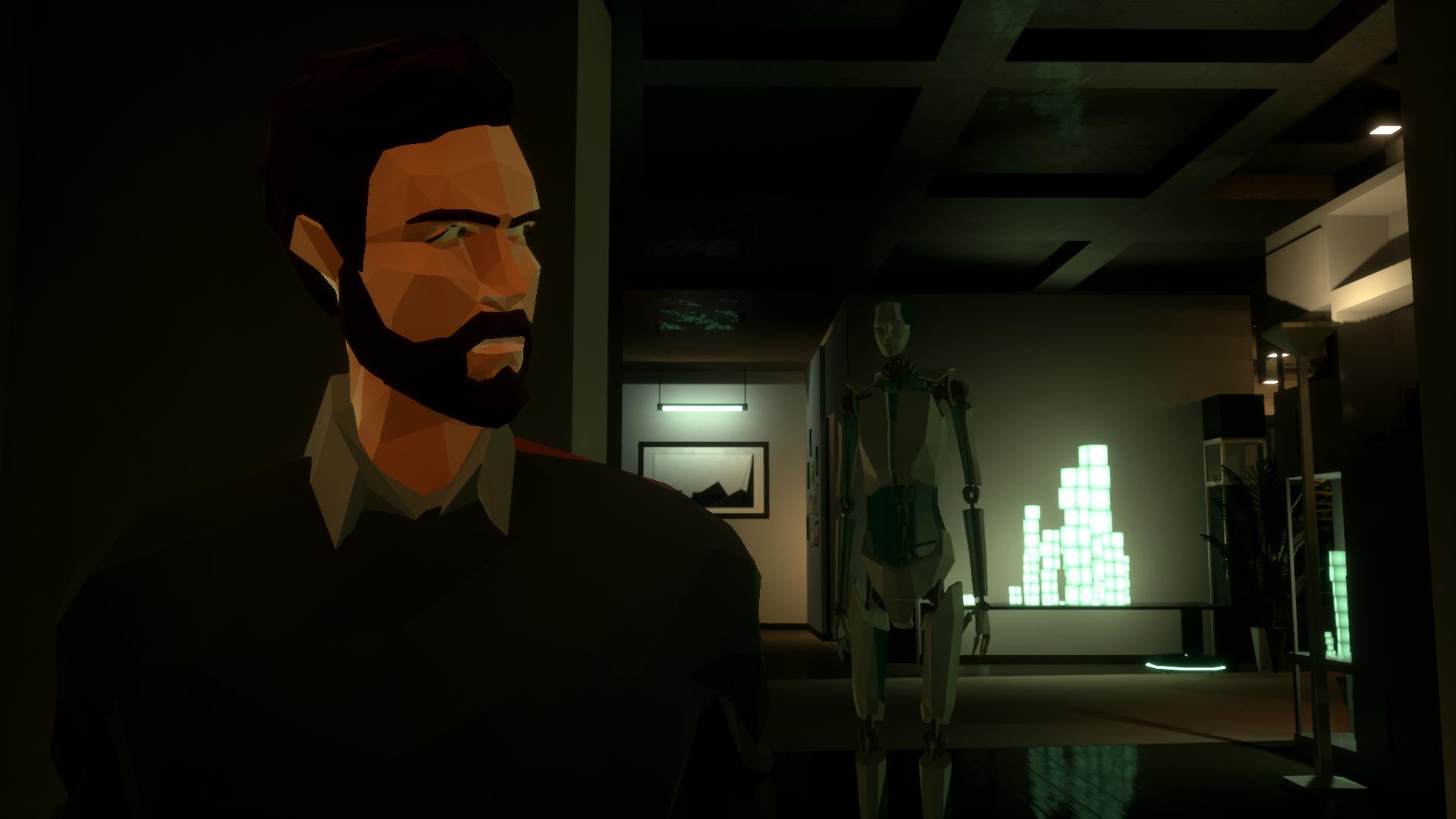
The game delivers an engaging and intense story riddled with interesting questions about technology, transhumanism, and other related themes. Daedalic’s Community Manager, Lisa Mallory, told IGN “every action will have a consequence”, and said how you interact with certain characters can influence the story later down the line. The game features only one ending, but your path to it depends on your choices and interactions throughout the game.
In my first hour or so with State of Mind, I had trouble navigating levels and completing certain objectives because State of Mind doesn’t use objective markers, or even a mission title or hint. I found this to be excellent for exploration (and these levels really do deserve to be explored) but not great for ease of use or clarity. There were times I hadn’t listened properly to NPCs or forgotten what I was doing and I had no support to help me out, which often left me wandering the level looking for anything to interact with that might progress the story. This was frustrating in the moment, but as a result, I quickly learned the layouts of the most common levels like Richard and Adam’s apartments, and learned to pay more attention to NPC dialogue.
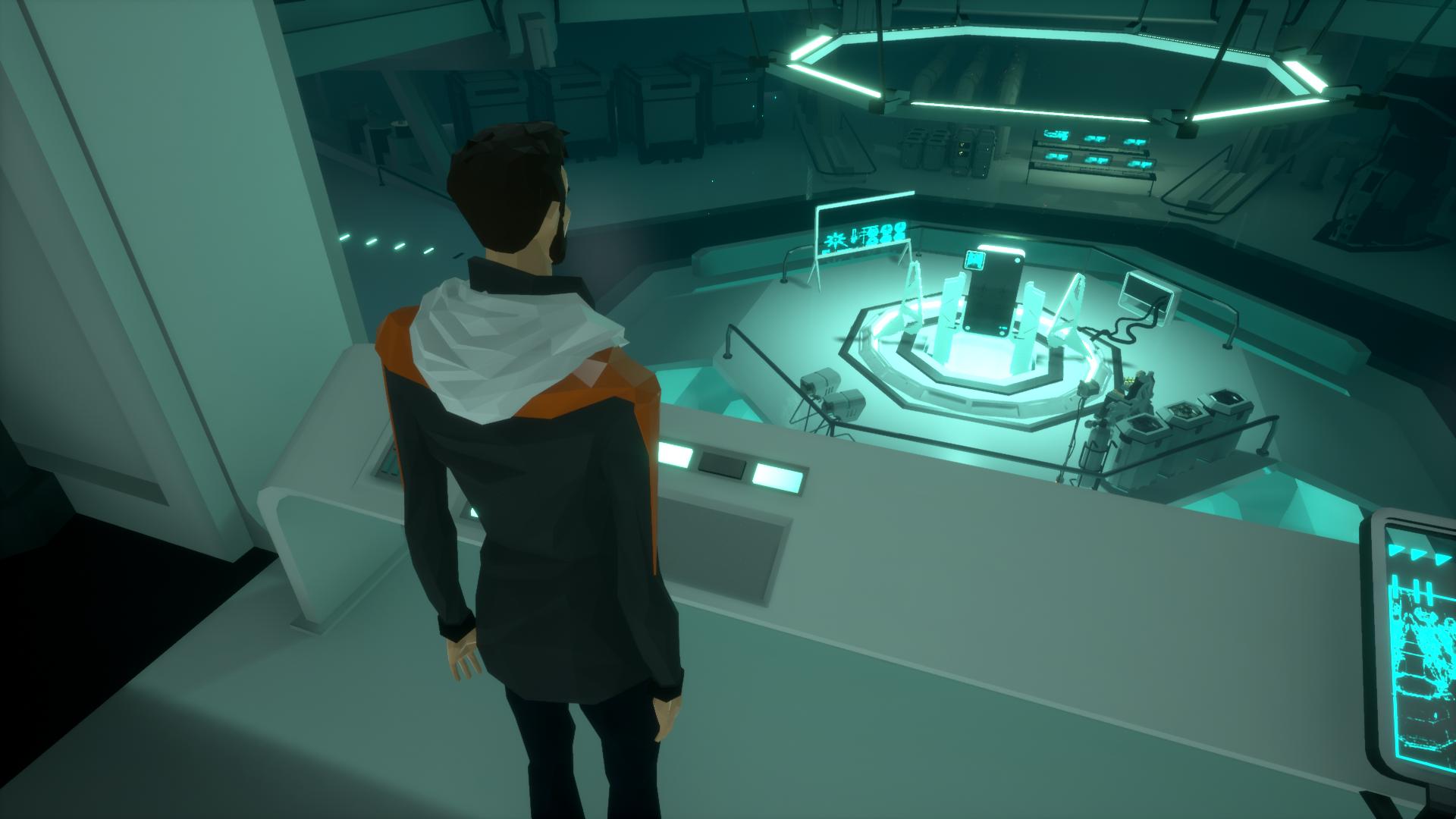
Both Richard and Adam have augmented-reality systems implanted in their eyes which highlight and distinguish things that can be interacted with and things that can be looked at in more detail. Despite the number of the things you might think a person could interact with, the levels aren’t crowded by the little green markers and work effectively to help the player navigate the world.
Character movement is floaty but realistic. If you suddenly change direction, the character will not react instantly as they do in some games, but they will take time to slow down, and will walk in smooth curves when you turn. This took some time to get used to and even at the end of the demo, I felt clumsy with my movement.
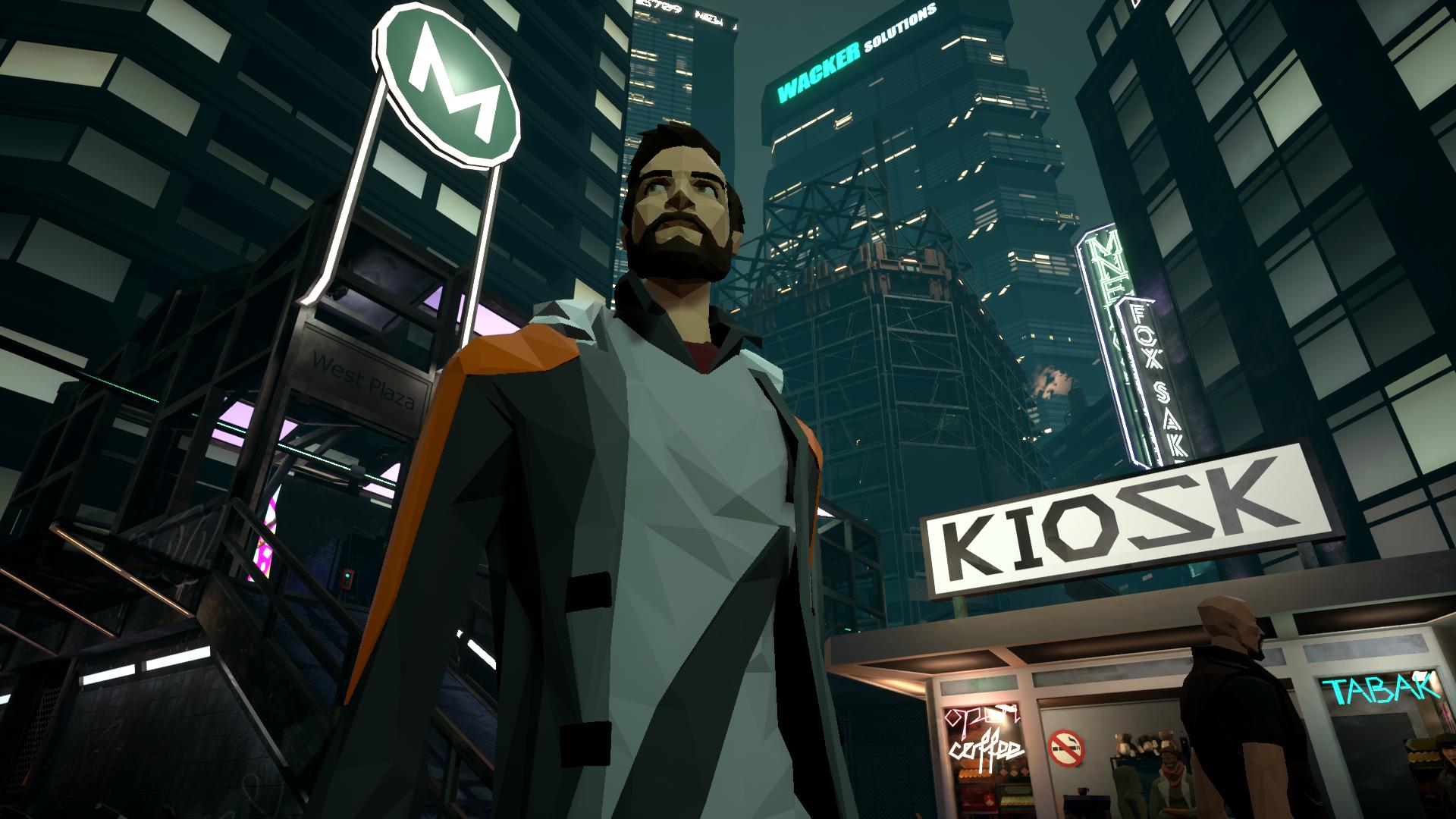
I think there are a few small changes Daedalic should make before release. First, give the player at least a small hint on the HUD as to what they have to do. It doesn’t have to ruin the exploration, just add a small, vague note to remind players what to do, e.g. “find someone to talk to about X” whatever X may be. Second, the movement could do with some small adjustments, in my opinion. Maybe tighten the turning circle and allow characters to react more quickly. Also, the loading times for a low-poly game like this are inexplicably long, so much so that I often found myself having time to check the news on my phone while waiting for it. Other than these minor things, I was left generally satisfied and impressed with my experience and with the game itself.
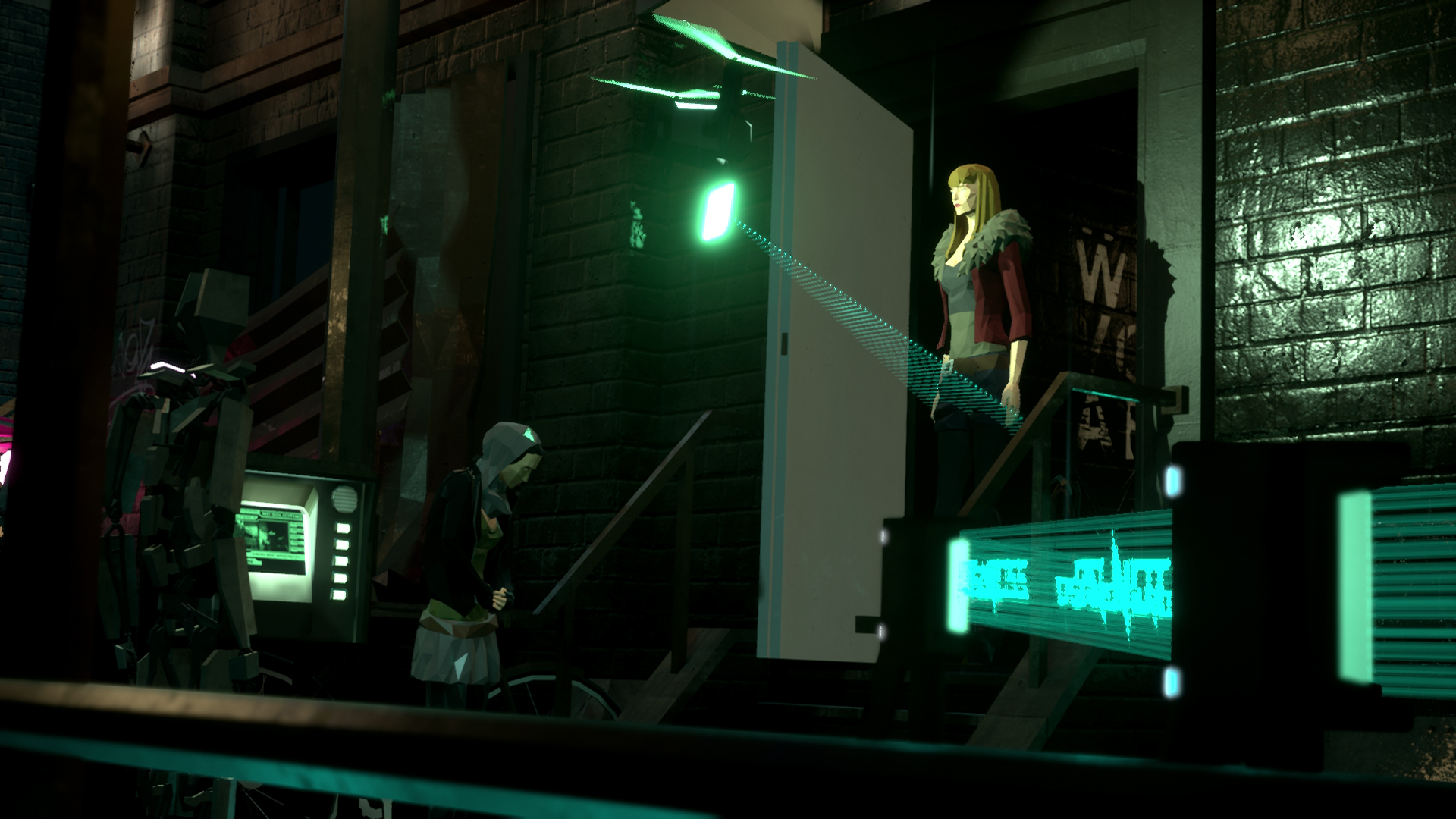
While State of Mind doesn’t have incredible, photorealistic graphics or fast-paced gameplay, it offers an interesting and engaging story, with fascinating characters and beautiful stages. At £25.99 at full price (10% off until August 16th) I would recommend State of Mind to anyone looking for a new, unique story game. State of Mind will release on PS4, XBOX One, PC and Switch on August 15th, where I will certainly be continuing the story.








You must be logged in to post a comment.